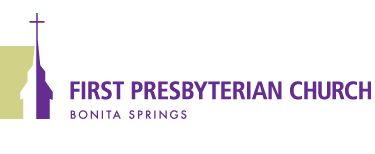Three years ago, nearly every congregation across the country plunged into the waters of livestreaming. Adapting to the inability to gather for in-person worship, churches of all sizes and brands invested in their technological infrastructures to stay connected to their communities and to continue to disciple their flocks. Since then, church leaders have endlessly pontificated about the benefits and drawbacks of online worship. Some have considered virtual worship as the great savior of the church, while others have suggested that true worship requires gathering physically as the body of Christ. In my humble opinion, most of the articles written have assumed homogeneity of diverse church contexts and uniformity in the vision behind livestreaming. Rather than considering the strengths and weaknesses of virtual worship in general, it is more helpful to look at the context we know best—our own church family.
By this time, I assume that nearly everyone in our church has worshiped online at least once. It may have been in 2020 during the six weeks First Church worshiped online only, or perhaps it was for the Home for the Holidays Christmas Eve service that same year. Today, worshiping online has become part of the seasonal rhythm for those who spend their winters in Southwest Florida and the rest of the year elsewhere. Some have never physically set foot in our church yet have discovered our livestream service and worship with us regularly from afar. No matter the entry point, our earnest desire is to leverage livestreaming to offer the living water of Jesus Christ (John 7:38) to help people grow as His disciples.
A few short years ago, First Church leaders innovatively worked to stay connected with our seasonal members and friends. Thanks to online worship, staying connected has never been easier. We continually hear reports from individuals who return to northern homes, reconnect with local churches, yet continue to worship with First Church virtually. An obvious benefit of this is that First Church can become a twelve-month spiritual home for our seasonal friends. The church has the opportunity to offer strong, biblically-centered worship to nurture the spiritual lives of our people near and far. Furthermore, we hope and pray our seasonal community feels more firmly established in the life of First Church.
Because of our unique seasonal nature, our vision for livestreaming is to create an online experience that resembles as close as possible being physically present in worship. We prayerfully design worship with both the in-person and online communities in mind. While some churches have rightly determined that online video consumption differs from in-person presentations and have decided to pre-record shorter sermons where the pastor speaks directly to a camera, our vision is different. Rather than speaking to a camera, we want our online community to experience worship as part of a large body. During in-person worship services, the pastor addresses the congregation rather than focusing on an individual, yet at times, it feels as if the pastor is speaking directly to your heart. We want our online community to sense they are part of a larger body but feel God is speaking directly to them.
While livestreaming has presented great benefits to First Church, to be candid, it is not quite the same as being together in the flesh. In February, some of our pastors and staff visited a group of members in a local community where one of the pillars of the church reflected on the experience of walking into the church for the first time after the pandemic. She said, “When I walked through the doors, I felt the presence of the Holy Spirit.” This is the power of being gathered with the body of Christ. Our scriptures witness the necessity of being together as a community. The apostle Paul recognized the need to be among the people in the churches he served, communicating a desire to visit them personally. He wrote to the church in Rome, “For I long to see you… I have often intended to come to you” (Romans 1:11, 13). Moreover, the writer of Hebrews encourages the church not to give up meeting together (Hebrews 10:25). Even our God Himself refused to be separated from us. The transcendent God became imminent when “[t]he Word became flesh and made his dwelling among us” (John 1:14). We were created for community and need to be together.
In summary, First Church’s livestream is like a letter written by the apostle Paul. He used the technology of his day as an essential tool for the gospel to offer instruction and express concern when he could not personally be present with his people. However, for Paul, it never took away his longing to be present with his people. Likewise, livestreaming enables the church to impart wisdom while we are apart, but it cannot take away our desire to be present with one another. We remember the words of our Lord, “where two or three gather in my name, there am I with them” (Matthew 18:20). When we are together, we experience the presence of the Spirit of God in our midst, and there is no substitute!
by Pastor Brad Rogers





